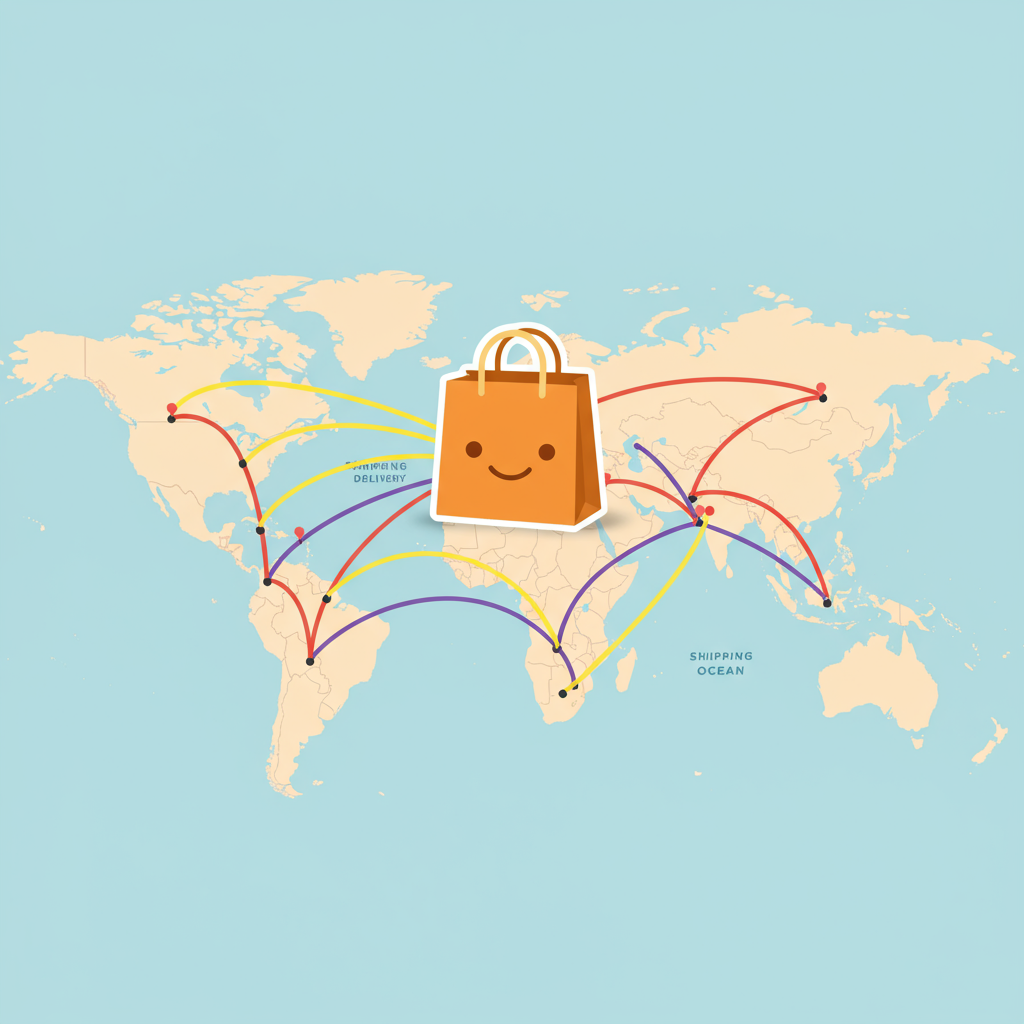A Comprehensive Guide to Expanding Your E-commerce Horizons Beyond Borders
Hello fellow Shopify merchants! I’m excited to share some insights today on a topic that can truly unlock massive growth for your business: international shipping.
Expanding beyond your domestic borders might seem daunting at first, but I assure you, the global market is brimming with potential customers eager for your products.
My goal with this article is to demystify the process and help you craft a robust Shopify shipping strategy for international orders.
I’ve learned a lot through my own experiences, navigating the complexities of customs, carriers, and customer expectations, and I want to pass that knowledge on to you.
The first step I always recommend is thorough research and planning. You wouldn’t launch a new product without market research, right? The same applies to international expansion.
Identify your target markets. Where are your potential customers located? What are their buying habits? Are there specific regions showing high demand for your products?
I also delve deep into the legalities and customs regulations of each target country. This is crucial to avoid costly delays, fines, or even product confiscation.
Understanding import restrictions, prohibited items, and specific documentation requirements for each country is paramount before you even think about shipping.
Next, let’s talk about shipping carriers. I’ve found that choosing the right partner is one of the most critical decisions you’ll make for international success.
Major players like DHL, FedEx, UPS, and USPS (for certain services) all offer international shipping. Each has its strengths, weaknesses, and specific service levels.
I often compare their rates, transit times, and reliability for different destinations. Sometimes, a hybrid approach, using different carriers for different regions, works best for me to optimize cost and speed.
Now, how do you charge for shipping? This is where your strategy truly comes into play. I’ve experimented with a few models to find what resonates best with my customers.
Flat-rate shipping can be simple to implement, but I find it can sometimes overcharge or undercharge customers, especially for varied product weights or distant locations.
Calculated rates, often integrated directly with Shopify and your chosen carriers, provide the most accurate pricing. I highly recommend exploring this option for transparency.
Free international shipping is a powerful marketing tool, but I only offer it when I’ve carefully factored the shipping cost into the product price or have a high average order value to absorb the expense.
Customs and duties are perhaps the most confusing aspect for many merchants, and I certainly found them challenging initially. This is where DDP vs. DDU comes in.
You need to decide whether you’ll ship Delivered Duty Unpaid (DDU) or Delivered Duty Paid (DDP). Each has significant implications for both you and your customer.
With DDU, the customer is responsible for paying duties and taxes upon arrival. I always make this explicitly clear on my product pages and at checkout to avoid any unpleasant surprises for them.
With DDP, you, the merchant, collect and remit these fees upfront. This offers a smoother customer experience, but it requires more setup and a deeper understanding of international tax laws.
I always ensure my customs forms are accurately filled out, including the Harmonized System (HS) codes for each product. This speeds up customs clearance and reduces the chance of delays.
Proper packaging and labeling are also non-negotiable. I use sturdy boxes and ample cushioning to protect products during their long journey across borders and through various handling facilities.
International shipping labels often require specific formats and information, so I double-check these requirements for each carrier and destination country to ensure compliance.
Providing tracking information is something I prioritize. Customers appreciate knowing where their order is at every step, from dispatch to final delivery.
I also make sure to communicate proactively about potential delays or customs issues. Transparency builds trust and manages customer expectations effectively.
What about returns? I’ve learned that a clear and concise international return policy is absolutely essential to build customer confidence and reduce friction.
Deciding who bears the cost of international returns can be tricky, but I always outline it clearly in my policies to avoid disputes.
Shopify offers fantastic tools to help with all of this. I leverage various shipping apps from the Shopify App Store to automate label creation, rate calculation, and customs documentation.
I also spend time configuring my shipping zones and rates directly within the Shopify admin, ensuring accuracy for each country I ship to, which saves a lot of manual effort.
My advice to anyone starting out is to begin small. Pick one or two international markets to test the waters before expanding globally. Learn from your initial experiences.
Always have clear, accessible shipping and return policies prominently displayed on your website. I’ve found this significantly reduces customer inquiries and builds confidence.
Excellent customer service is even more critical for international orders. Be prepared to answer questions about customs, tracking, and delivery times with patience and clarity.
I also strongly recommend considering shipping insurance, especially for high-value items. It’s a small cost for peace of mind against loss or damage during transit.
Don’t forget about currency conversion! Shopify handles this well, but I always ensure my pricing is competitive and transparent in local currencies where possible, using apps if needed.
In conclusion, international shipping on Shopify is a journey, not a destination. It requires continuous learning, adaptation, and a willingness to refine your processes.
But the rewards – a vastly expanded customer base, increased revenue, and the satisfaction of reaching customers worldwide – are absolutely worth the effort.
I truly believe that with a well-thought-out strategy, your Shopify store can conquer the global market and achieve incredible success.
I hope this detailed guide has been helpful for you. What are your thoughts on this article? I’d love to hear your perspective!
Embracing international shipping has been a game-changer for my business, and I’m confident it can be for yours too. Take the leap!






